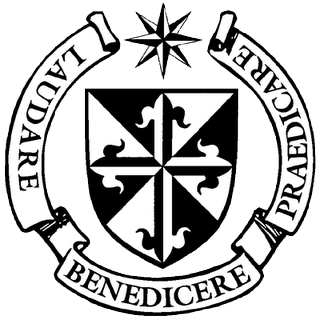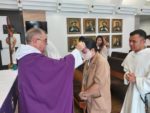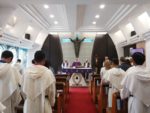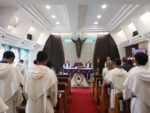Vocation is a gift. It is a gift from God. Everyone in this world has received a vocation, a call from God. There are a variety of vocations: vocation to married life, vocation to live a celibate life, or vocation to live a single life. There is also a vocation to be, for instance, a teacher, a doctor, a carpenter, a priest, a consecrated person, etc.
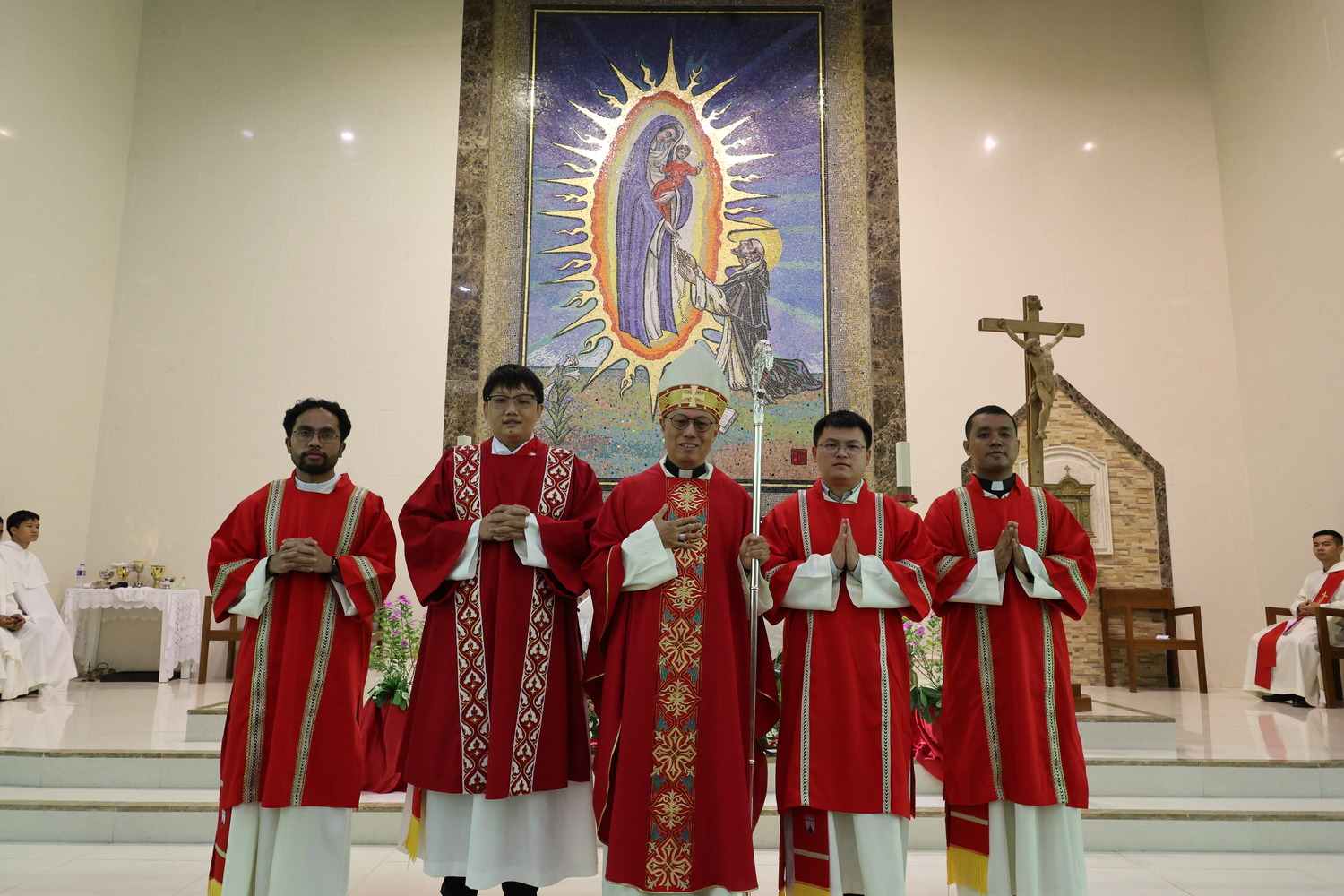
In all these vocations God calls us to live a happy life. No one is called to live a sorrowful life, or to live a bad or immoral life…
When we are happy with our lives and we find peace in our journey, we know then that it is God’s will, God’s plan for us.
Sometimes it happens that we do not understand God’s calling for us; at times we do not even like our job or our vocation. Sometimes other people do not understand our vocation, either. In any case, we need to understand that we did not choose to be born into this world, but it was God who created us; that He calls us and gives us different missions in life, all ordered in the end to our happiness: to praise Him and to serve our sisters and brothers.
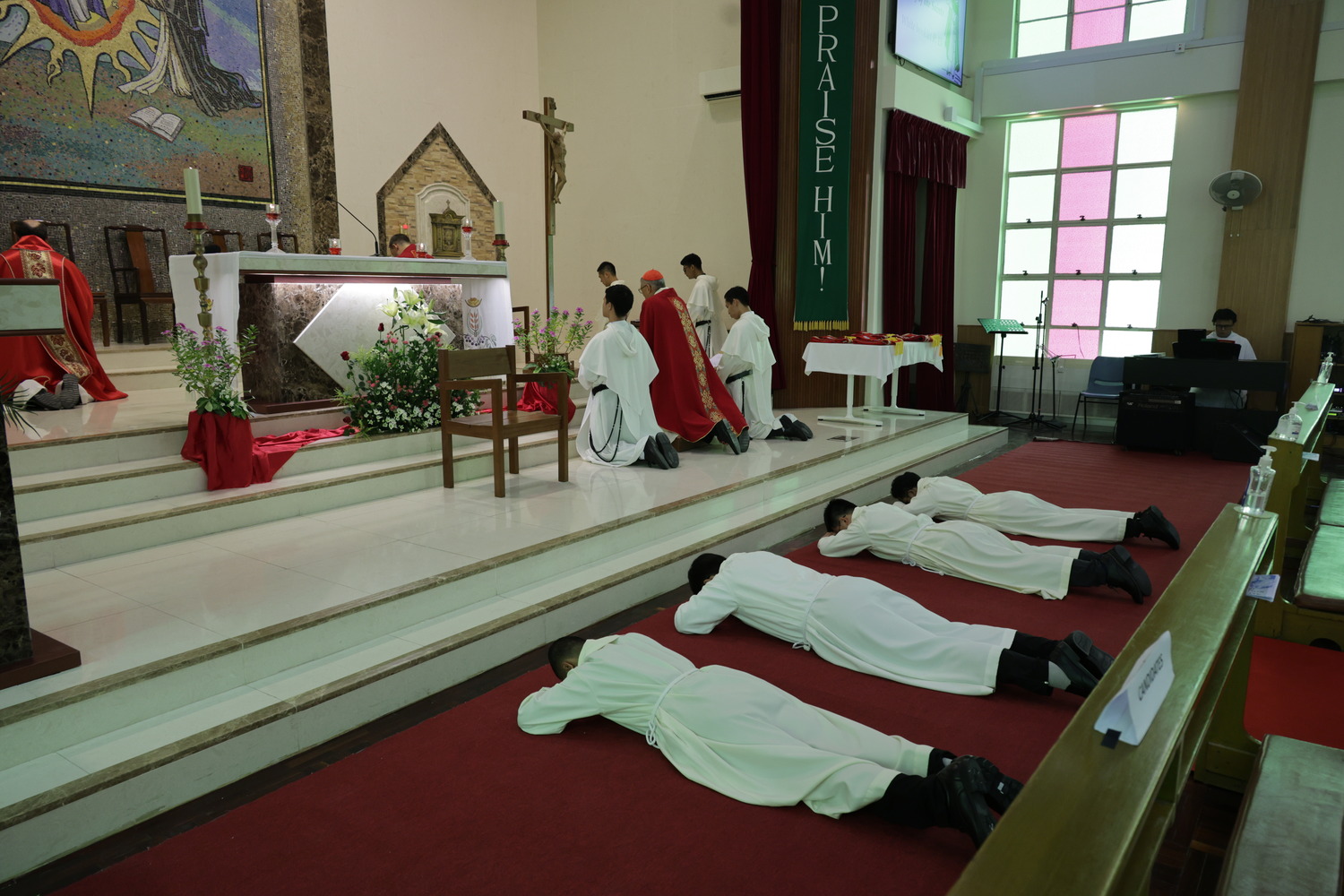
Consecrated Life is one particular vocation, a gift from God. It is a call to offer ourselves totally to Him; to detach ourselves from the world and live for God alone, in the service of the Church and of mankind.
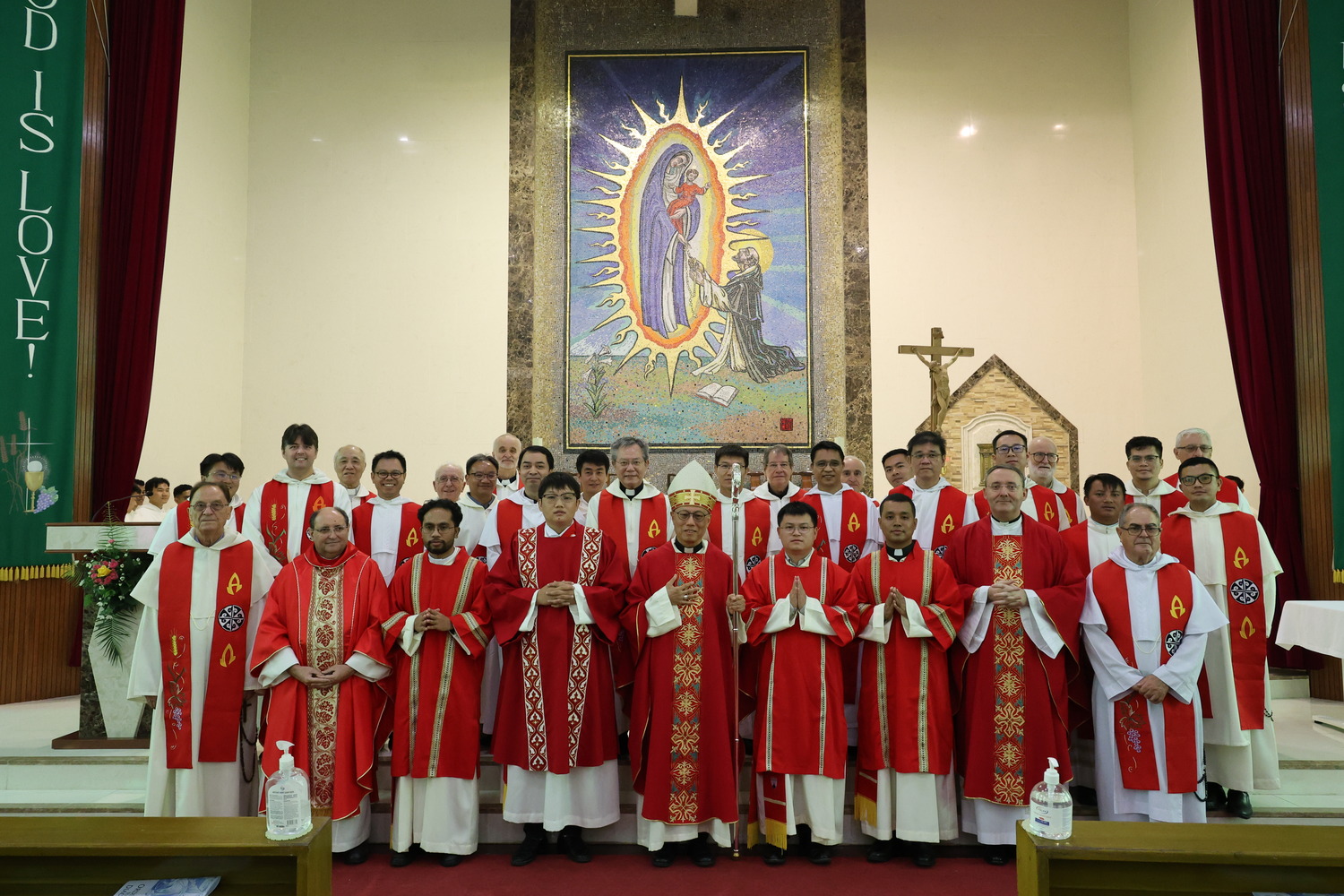
We could say that being totally consecrated to God is a call to figuratively open wide both our arms, lifting up our right hands high while keeping our left hand lower down: with our left hands we receive the supplications, tears, and joys of the world and offer them up to God in heaven; in turn, with our right hand, we receive the blessings, the graces and the healings from God and offer them down to mankind on earth.
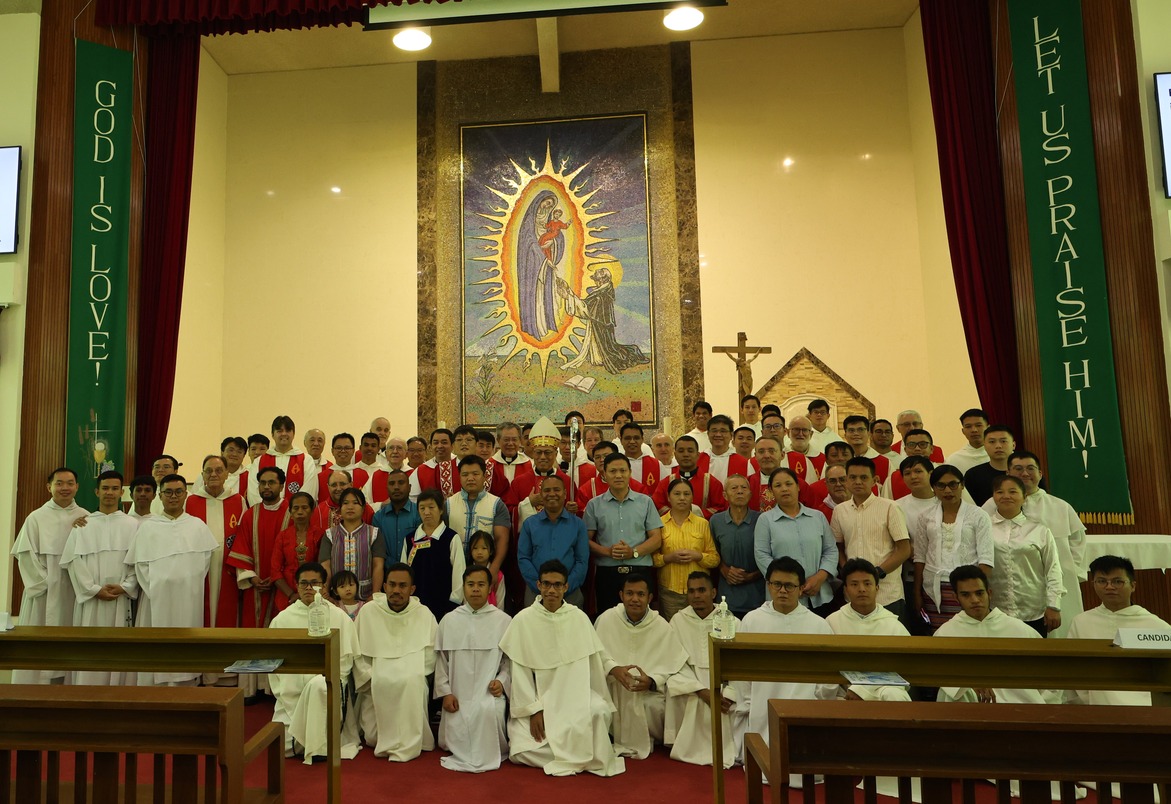
In addition, as Dominican clerical brothers, which is a very special form of consecrated life, endowed with the priestly ministry, we are called to stand by the altar of God and act in the name of Christ the Head of the Church as mediators between God and humanity.
Author: Bro. Rolindo Tilman Moniz O.P
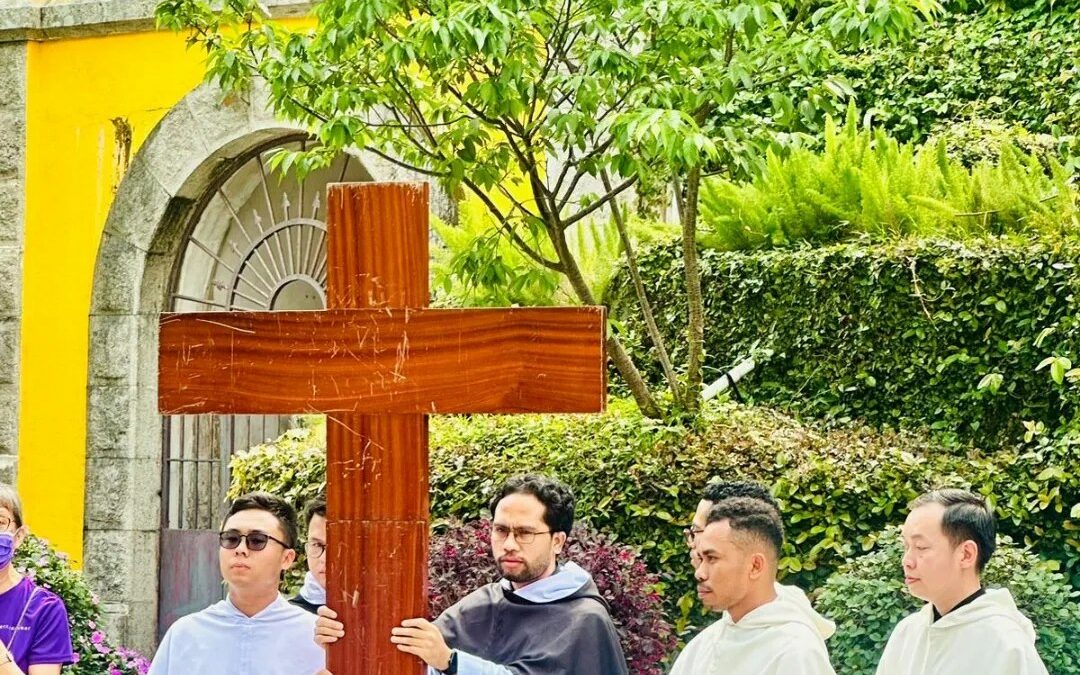
On this Good Friday in the Diocese of Macao, the Bishop, Religious Priests and Sisters, and the faithful gather together in a solemn procession of the Way of the Cross. Starting in Flora Garden and culminating at the top of Guia Hill, this annual tradition organized by the lay faithful in the Diocese of Macao holds deep significance for the faithful to enter into a spiritual journey towards Easter.
The Bishop, Religious Priests and Sisters, and the faithful united in the procession carry the weight of the Cross not just symbolically but with hearts open to the depth of Christ’s sacrifice.
In the footsteps of Jesus, they contemplate His suffering, His love, and His ultimate victory over sin and death. Each step taken in this procession echoes the journey of faith, inviting all to meditate on the cost of redemption and the boundless mercy of God. The Way of the Cross in Macao becomes a testimony of faith, a communal prayer of gratitude, and a pilgrimage of the heart.
On Good Friday, we reflect on the profound sacrifice that Jesus made for all of humanity as He walked the way of the Cross. Take us through Jesus’ journey to Calvary, where He bore the weight of our sins and endured unimaginable suffering out of love for us.
As we meditate on each Station of the Cross, we are invited to enter into the mystery of Christ’s passion and death, to contemplate His humility, His obedience to the Father’s will, and His boundless love for each one of us. We see Jesus’ unwavering resolve and His willingness to carry the Cross, knowing that it would lead Him to the ultimate sacrifice for our redemption.
The Way of the Cross reminds us of the reality of sin and the cost of our salvation. It challenges us to reflect on our own crosses, struggles, and sufferings and to unite them with Christ for the greater glory of God. Through the Stations of the Cross, we are called to embrace our own crosses with faith and courage, trusting in the promise of Easter joy and the victory of Christ over sin and death.
As we journey with Jesus along the Way of the Cross, may we be inspired to live lives of selflessness, compassion, and sacrificial love? May we find strength in Christ’s example and draw closer to Him as we contemplate His passion and death on this Good Friday. May we carry our crosses with hope and perseverance, knowing that through the Cross, we find redemption and eternal life in Him.
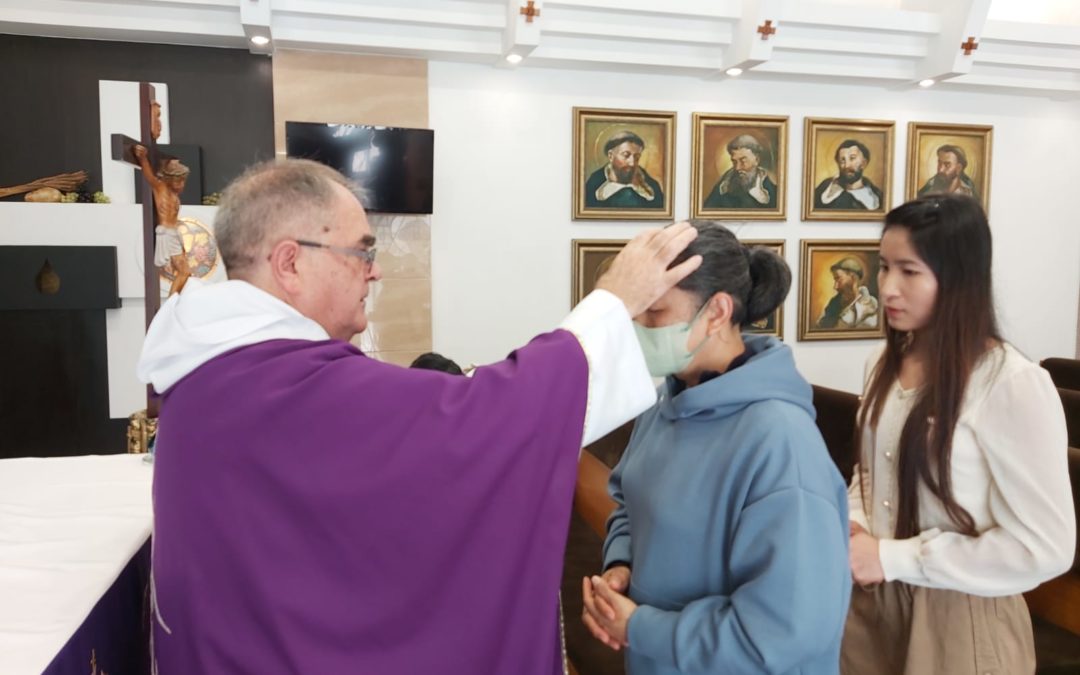
Lent is a period of forty days before Easter Sunday, during which we are invited to prepare ourselves for the celebration of Jesus’ resurrection. It is a time of penance, fasting, and prayer to remind us as believers of Jesus’ own forty-day fast before His Passion. During Lent, we are called to repent, believe in the Gospel, and focus on prayer, penance, fasting, and generous aid to others as means of entering into a renewal of spirit and community. The season of Lent precedes and prepares for Easter, serving as a time to hear the Word of God, convert, prepare for Baptism, reconcile with God and one’s neighbour, and engage in prayer, fasting, and good work. Lent is also a time for more intense prayer, interceding for those in need, and cultivating a lifestyle of sharing and responsibility.
Why Lent is Important for our Conversion?
Spiritual Preparation: Lent is a period of 40 days of prayer, fasting, and almsgiving that mirrors Jesus’ 40 days of fasting in the desert. It is a time for spiritual preparation, reflection, and repentance in anticipation of Easter, the most important feast of the Christian calendar.
Repentance and Conversion: Lent is a time for believers to turn away from sin, seek forgiveness, and grow closer to God. Through practices such as fasting, prayer, and almsgiving, Christians strive for personal conversion and spiritual renewal.
Mourning Christ’s Passion: Lent provides an opportunity for Christians to reflect on and mourn the suffering and sacrifice of Jesus Christ. By meditating on Christ’s Passion, believers deepen their appreciation for the immense love and mercy demonstrated by his death on the cross.
Renewal of Baptismal Promises: Lent is a time for Catholics to prepare for the renewal of their baptismal promises at the Easter Vigil. Through prayer and penance, believers recommit themselves to living out their faith and following the teachings of Christ.
Preparation for Easter: Lent culminates in the celebration of Easter, the most important feast in the Christian calendar. By observing Lent, Christians are better prepared to fully participate in the joy and significance of Christ’s resurrection on Easter Sunday.
Overall, Lent is a time for deepening faith, seeking reconciliation with God, and renewing commitment to living a life in accordance with Christian values. It is a season of spiritual growth, self-examination, and preparation for the celebration of the central mystery of the Christian faith, the Resurrection of Jesus Christ.
During the period of Lent we are encouraged to practice of:
Prayer: Lent is a time for intense prayer, where believers are called to turn to God with confidence, enter into communion with Him, and intercede for those in need.
Fasting: Fasting during Lent should not be a mere formality but a practice that challenges one’s sense of security, benefits others, and cultivates a lifestyle of sharing and caring for those in need. It involves choosing a sober lifestyle, avoiding wastefulness, and attuning hearts to the essentials and sharing.
Almsgiving: This practice represents a specific way to assist those in need, an exercise in self-denial to free oneself from attachment to worldly goods, and a means to respond to the needs of others through divine goodness. Almsgiving helps believers overcome the temptation of material riches and fosters a spirit of sharing with others.
The work of Charity: Alongside prayer and fasting, engaging in works of charity is emphasised during Lent. These works of charity are seen as pleasing worship to God and serve as a reminder of the need for a more just distribution of goods, allowing everyone to live in dignity and protecting creation.
Therefore, during the period of Lent, we are called to participate in prayer, fasting, almsgiving, and works of charity to deepen our relationship with God, grow in selflessness, and prepare our hearts for the celebration of Easter.
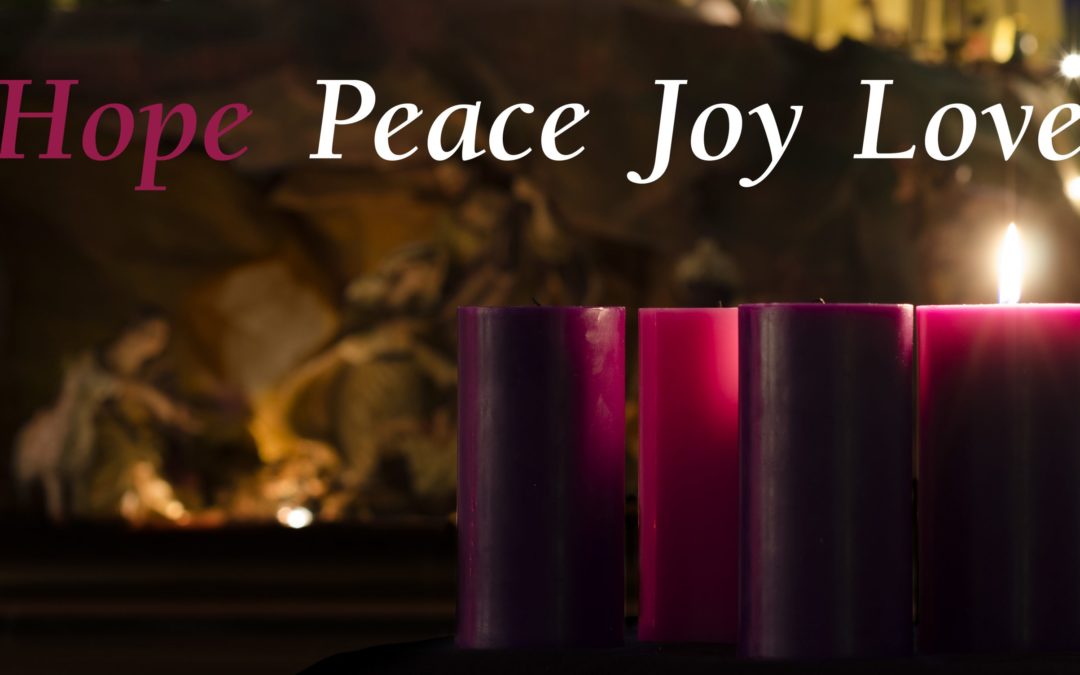
“Hope, Peace, Joy, and Love,”
Advent celebration is a significant time in the Christian liturgical calendar that marks the anticipation and preparation for the birth of Jesus Christ. It is important to meditate on the theme of Advent.
Advent: A Time of Hope:
Hope is a central theme during the Advent season. It symbolizes the anticipation of the coming of Christ and the promise of salvation. The Advent wreath, with its four candles representing the weeks leading up to Christmas, serves as a visual reminder of this hope. As Christians light each candle, they are reminded of the hope that Christ’s birth brings to the world. The prophet Isaiah’s words, “The people who walked in darkness have seen a great light” (Isaiah 9:2, NIV), encapsulate the essence of hope during Advent.
Advent: A Time of Peace:
Peace is another significant theme during Advent. It represents the tranquillity and harmony that Christ’s birth brings to humanity. The birth of Jesus is often referred to as the “Prince of Peace” (Isaiah 9:6). During this season, Christians are encouraged to seek inner peace and promote peace in their communities. Advent season serves as a reminder to reconcile with others, forgive, and strive for unity. The angelic proclamation of “Glory to God in the highest, and on earth peace, goodwill toward men” (Luke 2:14) resonates deeply during this time.
Advent: A Time of Joy:
Joy is a theme that permeates the Advent season. It represents the overwhelming happiness and delight that comes with the anticipation of Christ’s birth. The birth of Jesus is seen as a source of great joy, as it brings salvation and redemption to humanity. Advent season encourages believers to embrace this joy and share it with others. The angel’s words to the shepherds, “Do not be afraid. I bring you good news that will cause great joy for all the people” (Luke 2:10), encapsulate the essence of joy during Advent.
Advent: A Time of Love:
Love is a fundamental theme during Advent. It represents the unconditional love of God, who sent His Son to the world as a demonstration of His love for humanity. Advent season calls Christians to reflect on this love and to extend it to others. It is a time to show compassion, kindness, and generosity to those in need. The verse, “For God so loved the world that he gave his one and only Son” (John 3:16), encapsulates the essence of love during Advent.
To sum up, the Advent celebration holds immense significance in the Christian faith as it prepares believers for the birth of Jesus Christ. The themes of hope, peace, joy, and love are central to this season, reminding Christians of the profound impact of Christ’s birth on humanity. Advent serves as a time of reflection, anticipation, and spiritual growth, encouraging believers to embrace these themes and embody them in their daily lives. By understanding the essence of Advent and its themes, Christians can deepen their faith and experience a renewed sense of hope, peace, joy, and love during this sacred season.
Reflection of Br. Cesar O.P.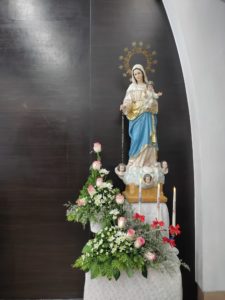
“On this feast day, we are encouraged to reflect on the power of prayer, particularly the praying of the rosary.”
The Feast Day of Our Lady of the Rosary, also known as the Feast of Our Lady of Victory, is celebrated on October 7th each year. This feast day holds great significance for the Dominican Order and is dedicated to the Our Lady of the Rosary as the patron of the Province of Our Lady of the Rosary.
The origins of this feast can be traced back to the 16th century when the Christian naval forces, known as the Holy League, achieved a remarkable victory against the Ottoman Empire in the Battle of Lepanto on October 7, 1571. The naval battle was fought in the Gulf of Patras, off the western coast of Greece.
Pope Pius V, who urged all Christians to pray the rosary for victory, attributed the triumph to the intercession of the Blessed Virgin Mary. In gratitude for the decisive victory and in recognition of the Virgin Mary’s intercession, he established this feast day, initially called “Our Lady of Victory,” which would later become known as “Our Lady of the Rosary.”
Throughout the centuries, devotion to Our Lady of the Rosary has grown, captivating the hearts of countless faithful Catholics across the world. The rosary, a powerful prayer that meditates on the life of Jesus Christ through the intercession of the Blessed Virgin Mary, has become closely associated with this devotion.
The Dominican province of Our Lady of the Rosary dedicated to Our Lady of the Rosary proudly upholds this devotion and pays homage to the Blessed Virgin Mary as their patroness. They honor her on this day by participating in special Masses, processions, and other religious ceremonies. These celebrations offer an opportunity for the faithful to come together and deepen their faith through prayer and reflection.
Devotees of Our Lady of the Rosary believe that through her intercession, they can obtain peace and protection, especially during challenging times. They seek her guidance and support in their spiritual journey, recognizing her as a loving mother who always leads them closer to her Son, Jesus Christ.
On this feast day, we are encouraged to reflect on the power of prayer, particularly the praying of the rosary. We are reminded of the significance of seeking Mary’s intercession and the importance of living a life of faith, gratitude, and love towards God and one another.
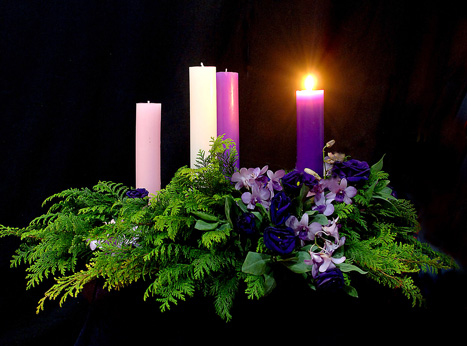
What is Advent?
The word Advent is derived from the Latin word advenire, meaning ‘to come’, referring to the coming of Christ.
In the Catholic Church, Advent refers to the four weeks preceding Christmas, a time of liturgical celebration that highlights the birth of Jesus Christ and, according to biblical prophecy, the Day of Judgment on which he returns.
Advent is a time of spiritual purification, as well as preparing for Jesus’ arrival. Purple is the color used in the vestments during celebrations, a symbol of the beginning of a new liturgical year, which occurs on the first Sunday of Advent.
Advent is a time for penance and spiritual cleansing, but for Christians, it is also a time of joy and rejoicing. This is because it nurtures the hope of the Messiah’s return through the celebration of his birth.
Advent represents Mary’s waiting for the birth of Jesus. This is announced by the Angel Gabriel in a vision in which he told her she was about to conceive the Son of God.
Advent always begins on the Sunday closest to the 30th of November and ends on the 24th of December, Christmas Eve.
The wreaths of candles has symbolic meanings tied to the Christmas season, and each of them has the meaning that the circle of wreath signifies the eternity of God with no beginning or end. And even each of the individual evergreen that makes up the wreath has the meaning that can be represented to our faith. We don’t mention each of them but the most important is that the wreath as a whole is meant to remind us of both immortality of our soul and God’s promises of everlasting life through our Lord Jesus Christ.
The four candles represent four weeks of Advent, and each candle represents each Sunday. Three candles are purple, the liturgical calendar color that represents the time of prayer, penance, and sacrifice.
The first purple candle symbolizes hope, Sometimes it is called the “Prophecy Candle” in memory of the prophets, especially Isaiah, who prophesied the birth of Christ. It symbolizes the expectation for the coming Messiah.
The second purple candle symbolizes faith. The candle is called the “Bethlehem Candle” as it symbolizes Mary and Joseph’s journey to Bethlehem.
The third candle is pink and symbolizes joy. It is the “Shepherd’s Candle”, and it is pink because rose is the liturgical color for joy. The third Sunday of Advent is Gaudete Sunday and is meant to remind us of the joy that the world experienced at the birth of Jesus, as well as the joy that the faithful have reached the midpoint of Advent.
The four and last purple candle, lighted on the four Sunday of Advent, symbolizes peace. It is the “Angel Candle,” as the angel’s message reminds us “Peace on earth, to the people of goodwill” (Luke 2:14 KJV). It is the final week of prayer, penance as we wait for the arrival of our Saviour.
In modern traditions, the Advent wreath we see does not include a white candle. But the white candle is in place in the middle of the wreath and on Christmas Eve. This candle is named “Christ candle” and it represents the life of Christ. The color white symbolizes purity because Christ is our sinless, pure Saviour.
